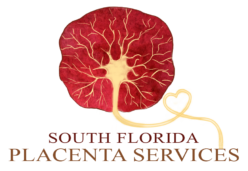Two major consequences of placentophagia, the ingestion of afterbirth materials that occurs usually during mammalian parturition, have been uncovered in the past several years. The first is that increased contact, associated with ingesting placenta and amniotic fluid from the surface of the young, causes an accelerated onset of maternal behavior toward those young. The second, which probably has importance for a broader range ofmammalian taxa than the first, is that ingestion of afterbirth materials produces
enhancement of ongoing opioid-mediated analgesia. The active substance in placenta andamniotic fluid has been named POEF, for Placental Opioid-Enhancing Factor. Recent research on both consequences is summarized, with particular attention to POEF, the generalizability of the enhancement phenomenon, its locus and mode of action, and its significance for new approaches to the management of pain and addiction.
The placenta contains high levels of prostaglandin which stimulates involution … in effect cleaning the uterus out
“The placenta contains high levels of prostaglandin which stimulates involution (an inward curvature or penetration, or, a shrinking or return to a former size) of the uterus, in effect cleaning the uterus out. The placenta also contains small amounts of oxytocin which eases birth stress and causes the smooth muscles around the mammary cells to contract and eject milk.
The most general benefit of placentophagy, according to recent research, is that placenta and amniotic fluid contain a molecule (POEF, Placental Opioid-Enhancing Factor) that modifies the activity of endogenous opioids in such a way that produces an enhancement of the natural reduction in pain that occurs shortly after and during delivery.”
KRISTAL, M.B. NEUROSCI BIOBEHAV REV 15(3) 425-435, 1991.
